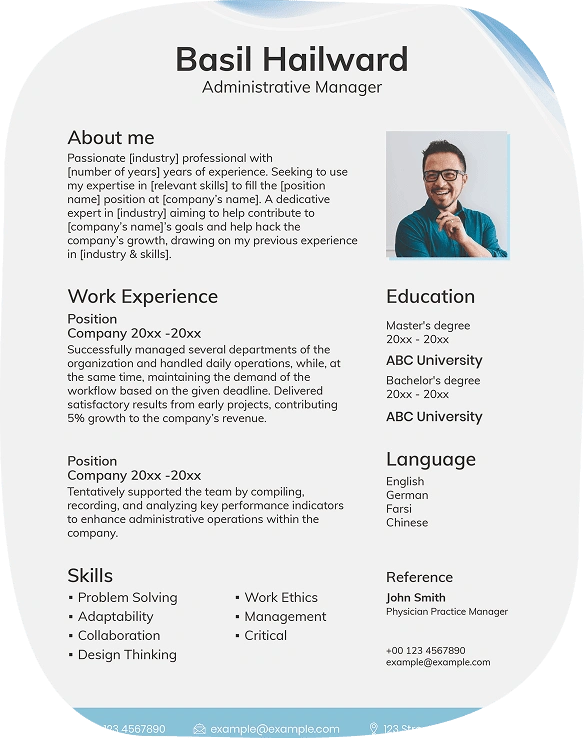LinkedIn profile optimization, LinkedIn Profile Best Practices, Why LinkedIn is Important
Learn how to build a LinkedIn profile that aligns perfectly with your resume. Get expert tips to improve consistency, boost visibility, and impress recruiters online.
Recruiters ignore over 90% of LinkedIn profiles. Why? Over 50% of them are incomplete. In recent years, recruiters have been relying on LinkedIn to do background checks before reaching out to candidates for various job openings. When your LinkedIn information checks out, it instantly builds trust and increases your chances of being shortlisted for an interview.
Even if you are not actively searching for a job, you must work on LinkedIn profile optimization. These days, recruiters spend a lot of time looking for passive candidates. A well-designed LinkedIn profile acts as a sales pitch, helping you attract better opportunities from top companies across India.
The best part: LinkedIn makes applying for jobs easy—via a one-click ‘Easy Apply’ button. Many other job portals also allow you to import LinkedIn data to quickly set up user profiles and apply for jobs. So LinkedIn profile optimization certainly has multiple benefits. However, LinkedIn should not just be an online version of your resume—it should provide additional context and create a reason for recruiters to contact you. In other words, it must complement your resume and highlight your strengths.
Want to learn how to create a LinkedIn profile that attracts recruiters? We’ve got the answers.
In this blog, you’ll discover:
In this blog, you’ll discover:
How to boost visibility and attract recruiters
LinkedIn profile optimization best practices
Why LinkedIn is Important
A resume should convey your value to recruiters quickly—without going into too much detail. Recruiters generally screen 250 resumes on average for each position they hire for. The latest data shows that most recruiters spend no more than 30 seconds on each resume—so you have very little time to make an impact. Too much information could overwhelm them while too little could make them reject your application.
So, how many pages should a resume be? There is no one-size-fits-all answer—you must adapt your resume to suit your work experience, the job description, and industry expectations.
How to Create a LinkedIn Profile
Here is a step-by-step process for setting up a LinkedIn profile:
Sign Up
Update basic profile information
LinkedIn Profile Best Practices to Complement Your Resume
Now that the basic LinkedIn profile is ready, it’s time for LinkedIn profile optimization. Here are some key points to remember:
Add a professional photo and banner
Optimize your headline for keywords
Example
Content Writer| Content Strategist| Copywriter | Helping Brands Connect With Their Audiences | Project Manager | Project Management Professional (PMP) Certified | Delivering IT Projects On Time and Within Budget Business Analyst | Uncovering Strategic Insights from Business Data |


Tell a story in the About section
Example
I’m a digital marketing specialist with 5 years of experience in on-page and off-page SEO. I’m known for my evidence-based approach to SEO, testing different strategies while improving ROI and reducing campaign costs. Lifelong learner interested in SEO best practices for AI and catching up with the latest Google algorithm updates
Match experience and education with your resume
Recruiters judge you by how well your LinkedIn experience matches your resume.
Example
Resume: “Streamlined sales prospecting job aid for 100+ sales agents, increasing conversion rates by 30%.”
LinkedIn: “Led a pilot project to update a sales process guide used by 100+ staff, increasing sales and revenues.


Showcase your portfolio and other sections
LinkedIn’s Featured section is a great place to showcase your portfolio, project, volunteer work, etc. This allows you to demonstrate your skills and build social proof.
This should include:
Highlight skills and ask for endorsements
Update privacy and contact information
Set your visibility settings to allow visitors to see your work history but not your personal data. Review permissions for who can message you and who can view your profile.
LinkedIn Profile Optimization Tips for 2025
How to Align Your LinkedIn Page With Your Resume
To get the most out of LinkedIn, focus on the following aspects:

Close The Gap Between Career Expectations and Available Opportunities
Working in a job not aligned with your skills or salary expectations can be frustrating. However, you don’t have to compromise anymore. GroYouth’s AI-powered job finder platform maps your skills and preferences and recommends the perfect opportunities. Through a combination of skills and personality assessments, we find the best fit for your aspirations.
That’s not all. GroYouth resume optimization and interview prep service helps you prepare for real-life scenarios, improving your chances of success. Our team of experts helps you go from confusion to confidence through personalized interventions.
Start a new chapter in your career with GroYouth.


